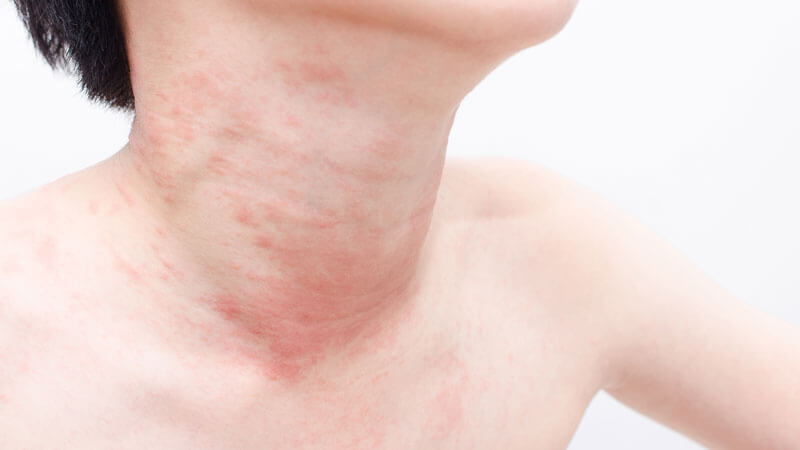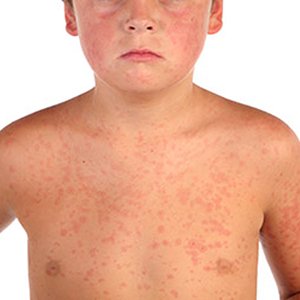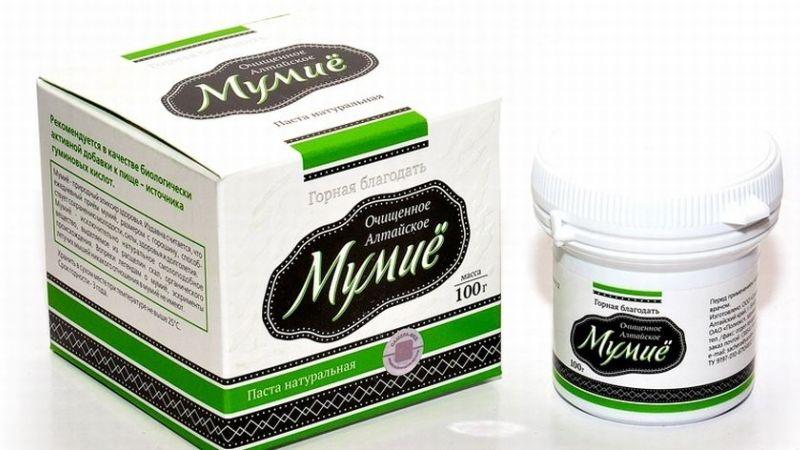Is rice allergy possible and how does it manifest?
Food allergy is a condition characterized by an increased sensitivity to food. An allergen is often the protein contained in fish, cow's milk, eggs, as well as cereals, nuts, citrus fruits, chocolate. In some cases, an allergic reaction occurs to eating rice, even though the protein composition of the product is poor.
The article tells whether there is an allergy to rice, the reasons for its appearance in adults and children, symptoms, which doctor to contact, how to diagnose and how to treat it.
The content of the article
Are there rice allergies?
Is rice an allergenic product or not? The answer is unequivocal - yes. In terms of chemical composition, rice is considered a hypoallergenic product, however, more than 10 types of proteins are found in it, and therefore rice can cause food allergies.
The likelihood of such a condition is influenced by the variety of the product, the content of provoking substances in the composition, the amount of allergen that has entered the body, the method of cooking, genetic factors, and features of the gastrointestinal tract.
Are white, brown and other types of rice an allergen?

Groats have a low degree of allergenicity... Due to the absence of gluten in the composition, it is recommended as an alternative to oats and wheat for people with hypersensitivity to gluten. However, any product, including rice, can acquire allergenic properties. It contains amino acids - the main provocateurs of an allergic reaction. Their number varies depending on the type of cereal.
There are 18 types of rice, each of which combines many varieties that differ in nutritional and taste qualities, external characteristics (color, size, shape)... The most popular for everyday cooking are white rice, parboiled rice grits, and brown unpolished rice. All varieties of cereals, to a greater or lesser extent, contain protein components, therefore, they can provoke an allergic reaction in people sensitive to them.
Raw rice has a higher degree of allergenicity than boiled rice. However, most of the proteins are thermally stable, so even after cooking, the allergenic potential remains.
For reference... Based on the health benefits of the body, the healthiest product is steamed white and brown unpolished rice... Due to the applied technology of factory processing, they retain vitamins, minerals and other useful compounds in their composition.
Causes of rice allergy
Allergies are often associated with increased sensitivity of the body to protein compounds. At the first contact with an allergen, the immune cells mistakenly identify the protein as harmful, and cause the formation of immunoglobulin E (IgE). Antibodies are adsorbed on the surface of tissue basophils and remain there for a long time.
When reintroduced into the body, the provoking antigen binds to the IgE basophils, activating mast cells and the production of histamine. The latter plays an important role in the development a number of painful conditions, causes spasm of smooth muscles and bronchi, expansion of capillaries, tissue edema, inflammation.
 The occurrence of food intolerance to rice is facilitated by the hereditary and genetic properties of the organism, which are manifested by abnormal immune activity and an increased level of reactivity.
The occurrence of food intolerance to rice is facilitated by the hereditary and genetic properties of the organism, which are manifested by abnormal immune activity and an increased level of reactivity.
The features of the gastrointestinal tract facilitate the contact of the allergen with IgE and increase the likelihood of developing an allergic reaction: low acidity of gastric juice, the development of pathogenic microflora in the intestine, syndrome of increased intestinal permeability.
Important! The reaction can be initiated not by the grain itself, but by the products used to treat the fields where the grain was grown (pesticides, fertilizers, pest control products). In order to give an attractive presentation to the product and increase the shelf life, modern manufacturers subject rice to chemical processing.
In children

In children, rice allergy most often occurs before the age of 12. This condition is explained by contacts with antigens new to the child's body and increased reactivity.
Subsequently, an immunological tolerance to rice develops, and the severity of the disease decreases. In some cases, rice intolerance can persist for life and be complicated by other allergic diseases.
The allergen can enter the child's body through the placenta or in the breast milk of a mother who has an intolerance to cereal. For this reason, a woman during pregnancy and lactation must control nutrition.
Otherwise, the likelihood of an allergic reaction in a child in the future increases.
How does rice allergy manifest?
The clinical signs of an allergic condition are varied and include skin symptoms, dysfunction of the gastrointestinal tract and respiratory system, and sometimes anaphylactic shock may develop.
The inflammatory response to an allergen can manifest itself as headache, hearing loss, redness and pain in the conjunctiva, and lacrimation.
Skin reactions
Skin symptoms often occur between 30 minutes and 2–3 hours after ingestion of the allergen. With irritation of the nerve endings, itching appears, rashes of various nature and localization, swelling, blistering on the surface of the skin and mucous membranes. In children, there is redness of the skin in the anus and on the genitals.
Depending on the severity of the allergy and the amount of allergen ingested, the symptoms persist from several hours to several days. If there is no contact with the provocateur of an allergic reaction, the skin manifestations completely disappear within 72 hours.
If a dangerous product has not been excluded from the diet, the allergic reaction persists, with each new episode characterized by more pronounced and severe symptoms.

Gastrointestinal problems
In the first hours after eating rice, disorders of the digestive system may occur. Patients complain of nausea, vomiting, abdominal pain, diarrhea, heartburn. In some cases, the condition is complicated by edema of the mucous membranes of the mouth, tongue, lips. In newborns, an allergic reaction can occur with increased gas production, intestinal colic, loss of appetite, regurgitation, and constipation.
Respiratory symptoms
Sometimes the allergic process leads to nasal congestion, shortness of breath, bronchospasm, wheezing, coughing, sneezing, sore throat, which makes it difficult to find the source of the problem.
Hidden rice allergy
It is characterized by late development of the clinical picture, usually 3 days after the first contact with the allergen. In contrast to the phase of the early immune response, the symptoms are less pronounced and increase gradually, provided that the allergen periodically enters the body.
General and local signs of allergy from the skin, organs of the digestive and respiratory systems are typical.

Other non-specific symptoms of latent rice allergy include:
- decreased endurance and performance;
- general weakness, malaise;
- headache;
- increased urination;
- pain in the lumbar region;
- muscle pain;
- a tendency to colds.
Diagnostics
Diagnostics and treatment of allergic reactions and pathologies of the immune system is carried out by an allergist-immunologist. Given the variety of clinical manifestations, the patient may need to consult other highly specialized specialists: pulmonologist, otolaryngologist, gastroenterologist, rheumatologist, dermatologist.
Examination of a patient with suspected allergies begins with an external examination and a study of the anamnesis data. The doctor evaluates the condition of the skin, the nature and localization of the rash. To limit the range of possible allergens, he finds out what foods and in what quantity the patient has consumed over the past 3 days. Using a biochemical blood test, the level of immunoglobulins E and G is assessed.
The most informative diagnostic methods are allergic skin tests and immunological tests... Differential diagnosis of food allergy should be carried out with other allergic pathologies and skin diseases. If symptoms from the digestive system occur, it is important to exclude gastrointestinal diseases with a similar clinic: acute gastritis, acute intestinal infections, gastroenteritis, colitis, irritable bowel syndrome.
Treatment

Therapeutic measures include several stages: alleviating the severity of clinical manifestations, removing the allergen from the body, preventing subsequent contacts with it. If concomitant pathologies, cross-allergic reactions are detected, they are simultaneously treated.
The elimination of symptoms and the absence of new episodes of allergy is provided by pharmacological methods, adherence to a hypoallergenic diet, with the help of homeopathic remedies. To enhance the effect, conservative therapy is supplemented with recipes of traditional medicine.
Medication
To alleviate the symptoms of food allergies or their complete disappearance, antihistamines are prescribed in various forms - spray, drops, tablets, injections, ointments. The dosage form is selected taking into account the patient's age, general health, and the severity of clinical manifestations.
If no more than a few hours have passed since the allergen enters the body, enterosorbents are taken. If rice was eaten several days ago, diuretics and infusion therapy can speed up the elimination of the allergen.
Homeopathic
Antihistamines are symptomatic and relieve the severity of symptoms, but do not affect the underlying cause. Therefore, homeopathic medicines are increasingly used to treat food allergies. They are absolutely safe for the body, well tolerated by patients, and rarely cause side effects.
The funds do not have a direct effect on body functions, but enhance specific and nonspecific immunity, modify protein structures, reduce sensitivity to the allergen and reduce the likelihood of relapse. Homeopathic remedies contribute to the recovery of the whole organism.
For reference. It is necessary to take homeopathic remedies for a long course (on average 2 months).
Traditional methods
Traditional recipes in combination with conservative therapy methods shorten the duration of treatment and reduce the drug load.
Fresh mint relieves itching, soothes irritated skin, and speeds up the healing process of the outer skin. At the site of the lesion, you need to attach mint leaves and fix with several turns of the bandage.
Council. Hard-to-reach areas on the skin can be treated with aloe juice.The plant has anti-inflammatory, wound healing, bactericidal properties.
Green tea is used as an antioxidant. Several cups a day inhibit the oxidation of free radicals, inhibit the activity of inflammation, prevent the progression of allergic reactions, remove toxins and toxins, and normalize the digestive tract.
Another effective remedy in the fight against food allergies is mummy. The product has a diuretic, laxative, anti-inflammatory and tonic effect. To prepare the medicine, 1 g of mountain resin must be diluted in 1 liter of purified warm water. Take the solution 1 time a day in the morning, 100 ml for adults and children over 7 years old. A solution prepared from 1 g of mummy and 100 ml of warm water can be used externally on the sites of irritation and rash.

Preventive measures
The most significant measures for the prevention of food allergies are lifestyle changes, rejection of bad habits, proper and balanced nutrition, timely treatment of diseases of the digestive system.
For infants, small doses of rice are introduced into the diet. In the absence of an allergic reaction, the rate of the product is gradually increased. If the baby is allergic to cereal, you need to exclude it from the menu for a while. A new product can be introduced no earlier than after 2 weeks.
Limiting rice in the diet of a mother with increased sensitivity to the product during pregnancy and breastfeeding will help reduce the likelihood of a child's allergy to rice.
The risk of food allergies increases with bowel disruption. Due to frequent and prolonged constipation, toxins and toxins accumulate in the body, which causes negative manifestations on the part of the skin and digestive organs. In order for the stool to be regular and of normal consistency, it is necessary to consume more vegetables, fruits, berries, herbs.
Read also:
How to recognize a beet allergy.
The most delicious recipes for cucumbers with citric acid for the winter.
Reaction to eating Chinese plastic rice
On the shelves, you can find fake rice from China. Outwardly, it does not differ from natural grain, but its taste and usefulness are much lower. The worst thing is that such a product threatens health and is toxic to the human body. To protect yourself from purchasing plastic rice, it is better to buy premium cereals from proven foreign or domestic manufacturers.
Eating such rice increases the likelihood of an allergic reaction due to the presence of potato starch in the composition. For the production of cereals, polyethylene is used, which is passed through a meat grinder, and potato starch. The output is smooth and even grains. Then they are mixed with natural rice groats, reducing the cost of goods.
Council. To check the quality of rice groats, it is enough to dip a few grains into water. The natural product will settle to the bottom because it is heavy and absorbs water, and the plastic surrogate will float to the surface.
Conclusion
Rice is a low allergenic food. But with excessive use or the presence of provoking factors (age-related features of the gastrointestinal tract, hereditary predisposition), the risk of an allergic reaction exists.
If you identify the allergen in time and limit contact with it, you can hope for a favorable outcome and forget about the unpleasant symptoms of the disease.